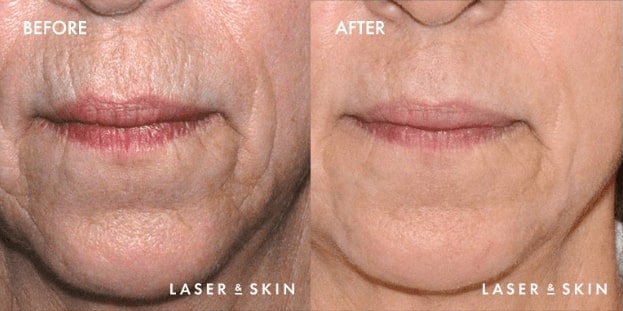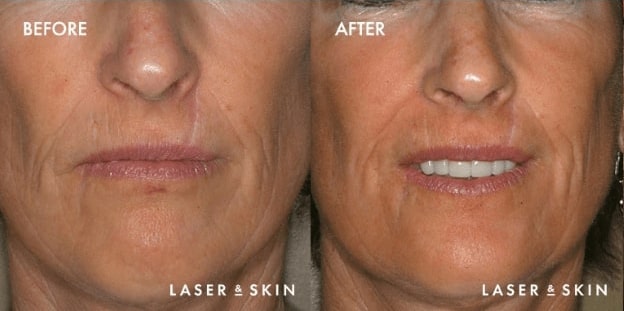What is Fractional Ablative Laser?
Surface imperfections, wrinkles and scars can be dramatically reduced with fractional laser skin resurfacing. Using one of the several resurfacing lasers at our facility, we can precisely remove sun-damaged and aging skin, layer by layer.
Fractional lasers deliver thousands of tiny, but deep, columns of heat into your skin, producing microthermal treatment zones.
How it Works
This treatment eliminates old epidermal pigmented cells and deposits heat deep into the dermis to tighten skin and stimulate collagen remodeling. Just as important, though, are the areas of the skin the fractional laser leaves untouched. For every microthermal zone the laser targets and treats intensively, it leaves the surrounding tissue unaffected and intact. This “fractional” treatment allows the skin to heal much faster than if the entire area were treated at once, using the body’s natural healing process to create new, healthy, tighter tissue to replace skin imperfections.
With laser resurfacing you, have improvement in the outer layers with removal of sun damage changes and more tightening, but an additional one-week period of downtime. There is some immediate tightening and, similar to nonablative techniques, new collagen formation that continues for 6 months, producing smoother, fresher, younger-looking skin.
Results



Recovery
In the first few days after the procedure, your skin will be very red. There will likely be some oozing of blood-tinged fluid. You will have some swelling, which goes down quite a bit by the third or fourth day. Your new skin will have a reddish/pink quality, which fades over the next several weeks. Post-procedure discomfort is usually minor. Ointment (usually Aquafor) is applied liberally for the first 6-7 days to protect the new skin, then moisturizers with sun block are used. Makeup can usually be resumed after 7 – 9 days.
Frequently Asked Questions
What are the benefits?
Lasers provide a level of control that is difficult to achieve with other treatments. With lasers, your doctor can immediately visualize the effect of the treatment. Laser resurfacing is more predictable than other forms of treatment. Shorter recovery time than traditional treatments are often noted, with most of our patients able to apply makeup at the time of their one-week follow up visit.
What type of anesthesia is required?
Laser skin resurfacing is usually performed in our office with topical anesthesia and other medications. We usually give narcotics, anti-anxiety medicines and an intramuscular shot of Toradol (a medicine similar to ibuprofen). Nerve blocks (like what you get at the dentist) can also be used. Intravenous sedation is available, but most patients do very well with the above combination of pain control modalities that we use.
What are the risks?
As with any procedure where there is a break in the skin barrier, there is a possibility for side effects to occur. Infection is uncommon, and if it does occur, usually responds rapidly to the appropriate antibiotic. Everyone undergoing full face resurfacing is put on an antibiotic, an antiviral and an anti-yeast medicine to help prevent skin infections.
Hyperpigmentation (extra tanning or browning of the skin) is more common than hypopigmentation (lightening of the skin) but is transient and responds well to topical creams and sunscreen. The long-term sun damaged cells will be removed, clearing any precancers or excess brownness and will return your skin to its natural skin tone. You will tan normally (but of course we don’t recommend tanning, as that increases wrinkling as well). The treated skin will be blended in with the surrounding skin. There are several products that we can use for your neck, chest, arms and even legs to help treat brown spots in these areas. Permanent hypopigmentation is very unusual.
WHAT LASERS ARE USED?
- Fraxel repair®
- Ultrapulse® CO2 Deep Fx
- Sciton Pro-Fractional


